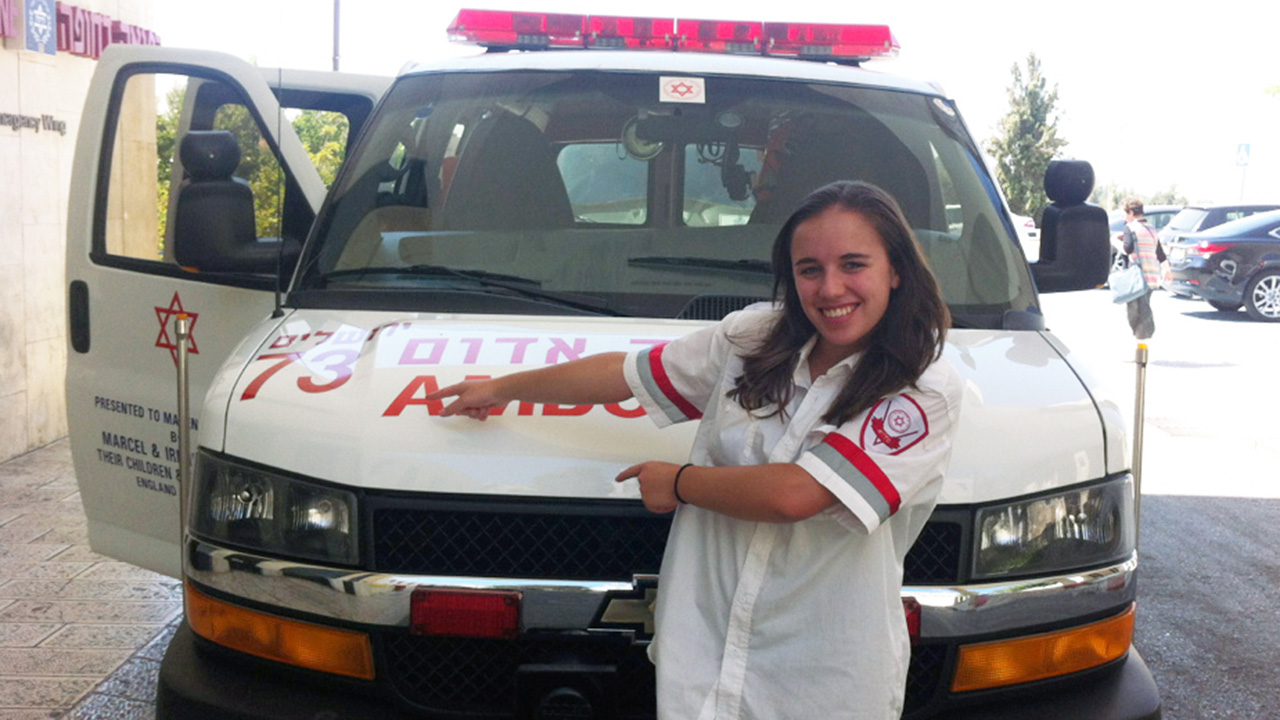Exploring trauma research
Two years ago Erica Sacoransky travelled overseas to work as a first responder with Magen David Adom, Israel’s national emergency medical disaster, ambulance and blood bank service. During the six-week volunteer program, she responded to emergency calls on an ambulance with a team of paramedics and other volunteers. “I took vital signs in the ambulance, assisted with patient care and helped with patient transport until arrival at the hospital,” says Sacoransky, a third-year undergraduate student studying kinesiology at the University of Toronto.
The experience sparked her interest in trauma and emergency care, so she started looking for summer research opportunities at Sunnybrook Research Institute (SRI) because of its renowned trauma and burn centres. She found the D+H SRI Summer Student Research Program last year, applied and got in. Supervised by Dr. Avery Nathens, director of the Trauma, Emergency & Critical Research Program at SRI, Sacoransky’s research explored the accuracy of triaging injured burn patients. Her project aimed to determine the rate of local undertriage—underestimating the severity of an illness or injury—and characterize undertriaged patients. She compared the injuries of people brought directly from the field to the burn centre with those who were transferred to the burn centre from an emergency department. She presented her work at the 2015 Best Summer Research Project competition and won first place within the category of the Evaluative Clinical Sciences platform.
This year she is back at SRI, again working as a summer student in Nathens’ lab. “The purpose of the research project is to determine the rate of unplanned reoperation following an index surgical procedure and to characterize the factors associated with unplanned reoperation,” says Sacoranksy. “The results of the study will inform quality improvement efforts related to perioperative processes of surgical care in order to improve care for patients.”
A typical day consists of looking at patient charts, reading through surgical reports and noting down pertinent information. She is learning about different operations and all the steps that have to take place to execute them.
Sacoransky has also advanced her interest in the health sciences and surgery fields through her co-op class in the anatomy department at U of T. She completed 100 hours volunteering as an anatomy prosector, someone who prepares cadavers for examination by medical students. “My experience as an anatomy prosector was very interesting. It deepened my understanding of the human body through hands-on experience,” she says.
Expecting to earn her undergraduate degree in spring next year, Sacoransky is applying to medical schools this year. When asked what is most rewarding about working at SRI, she says, “the opportunity to work alongside mentors from whom I am learning so much, not just about research, but about the medical profession and life in general.”






